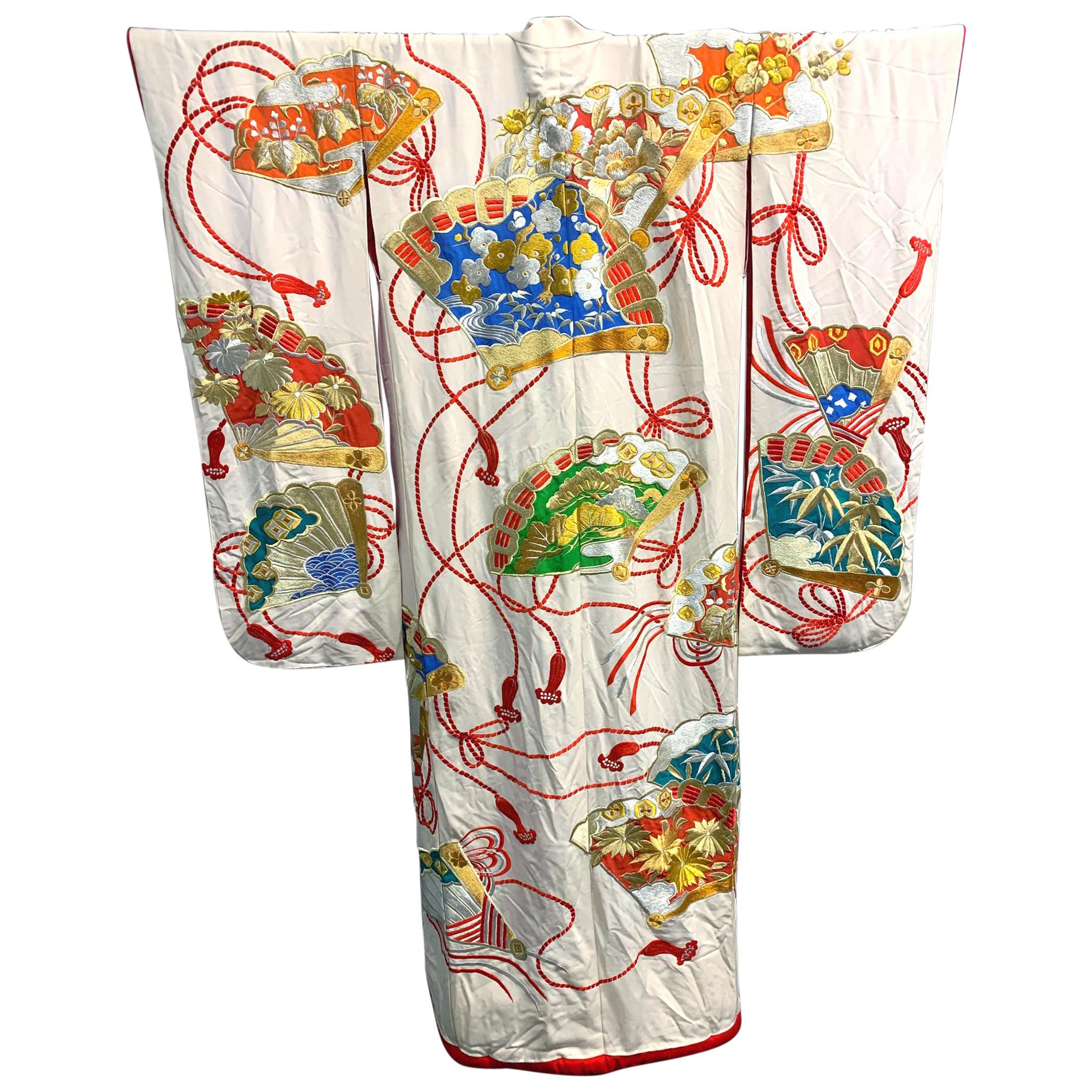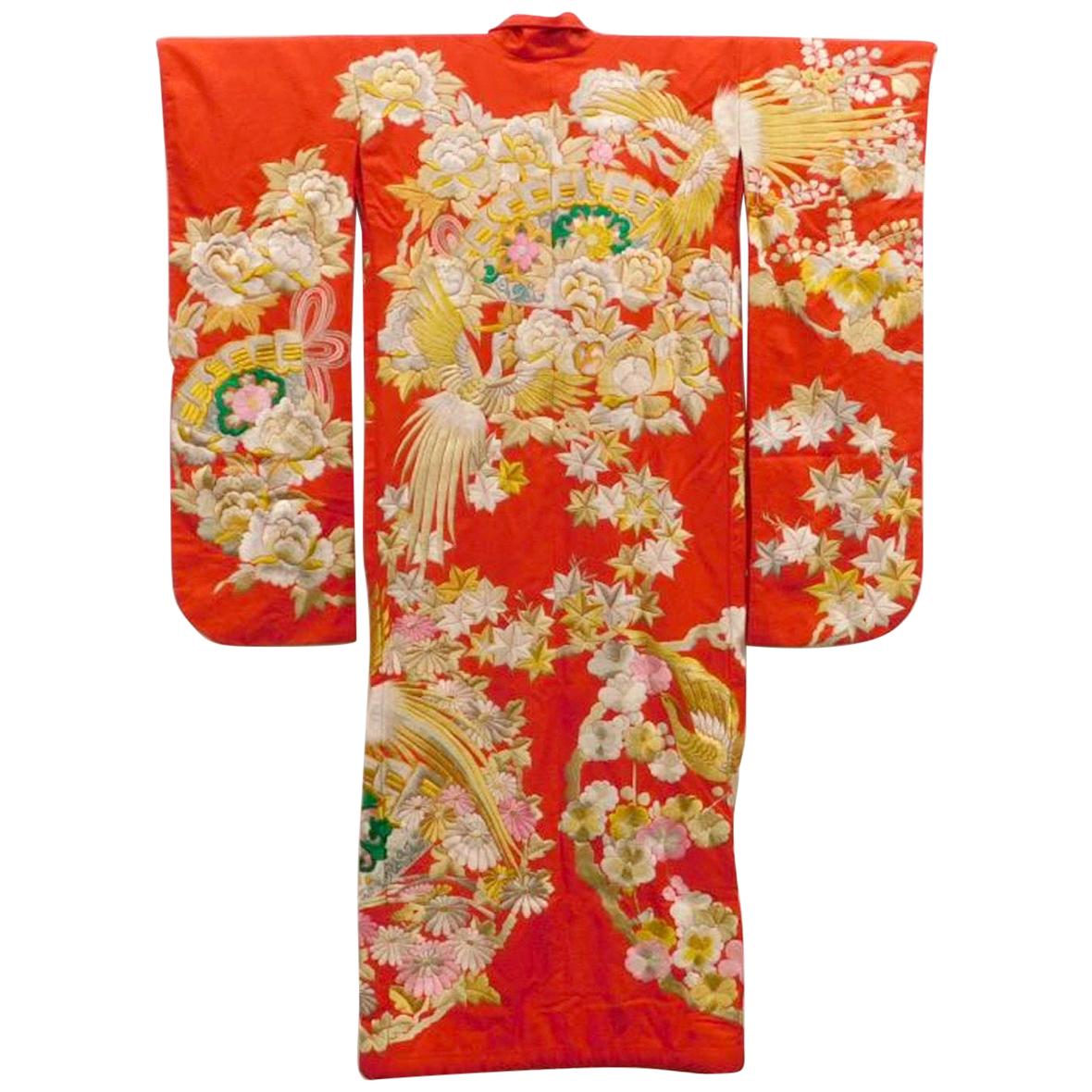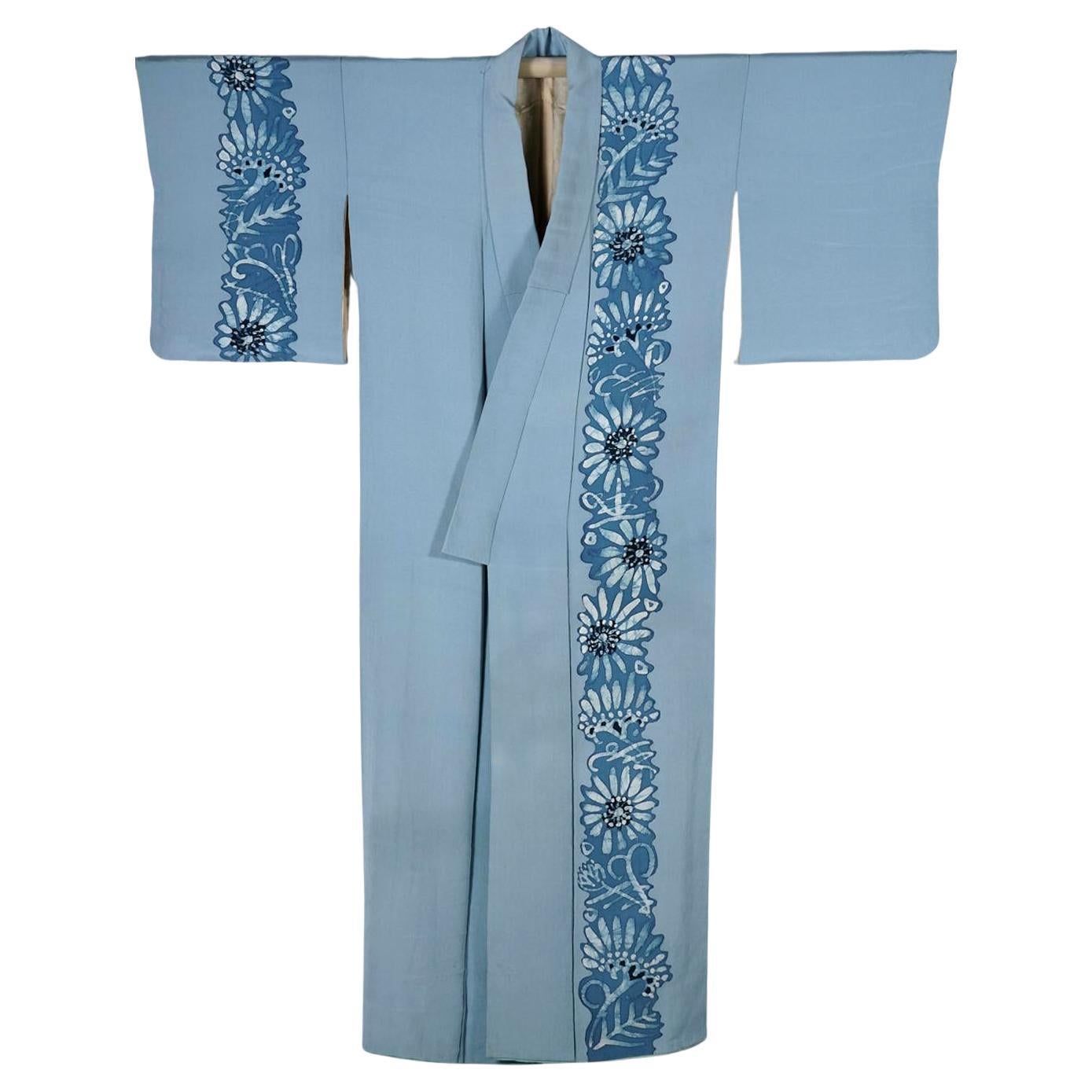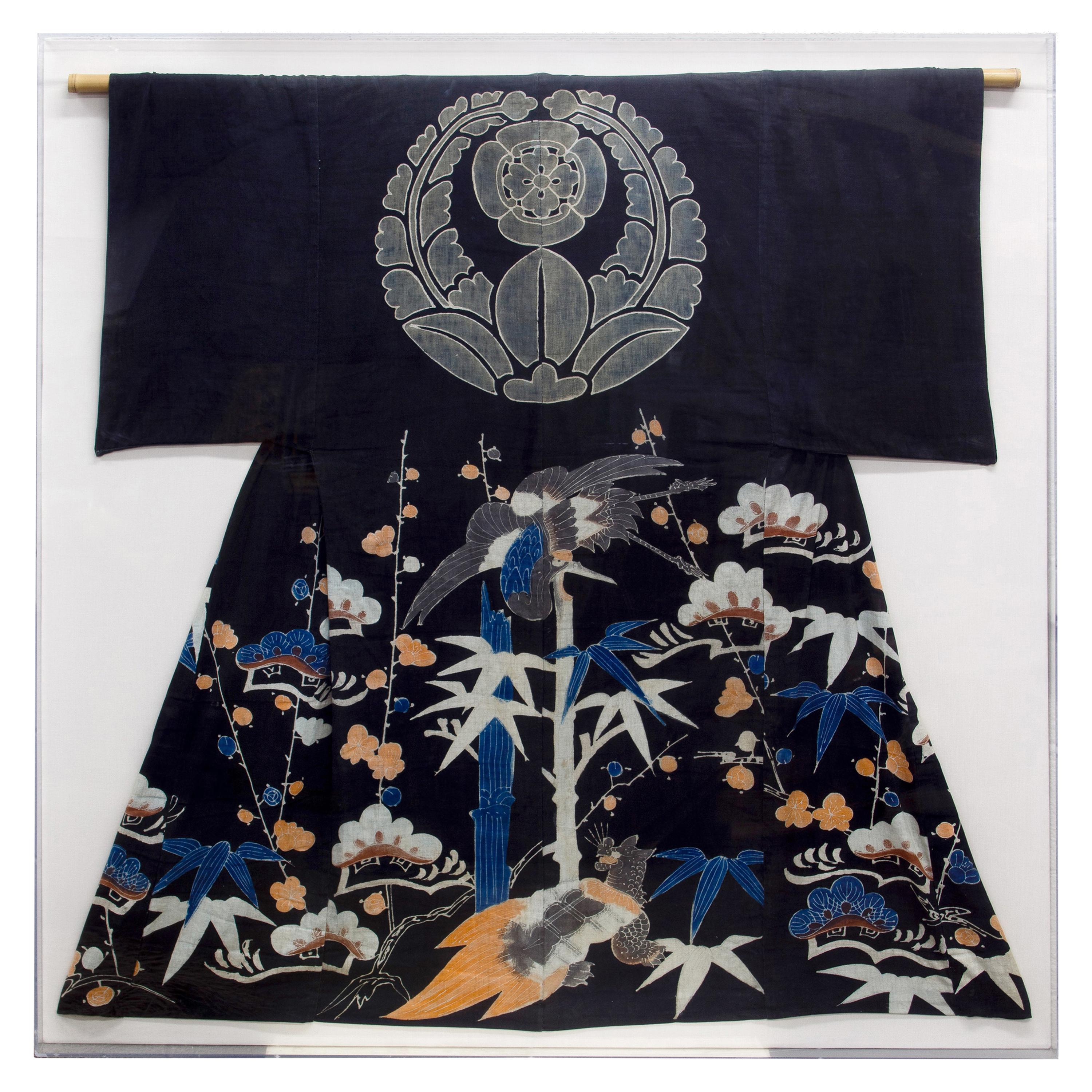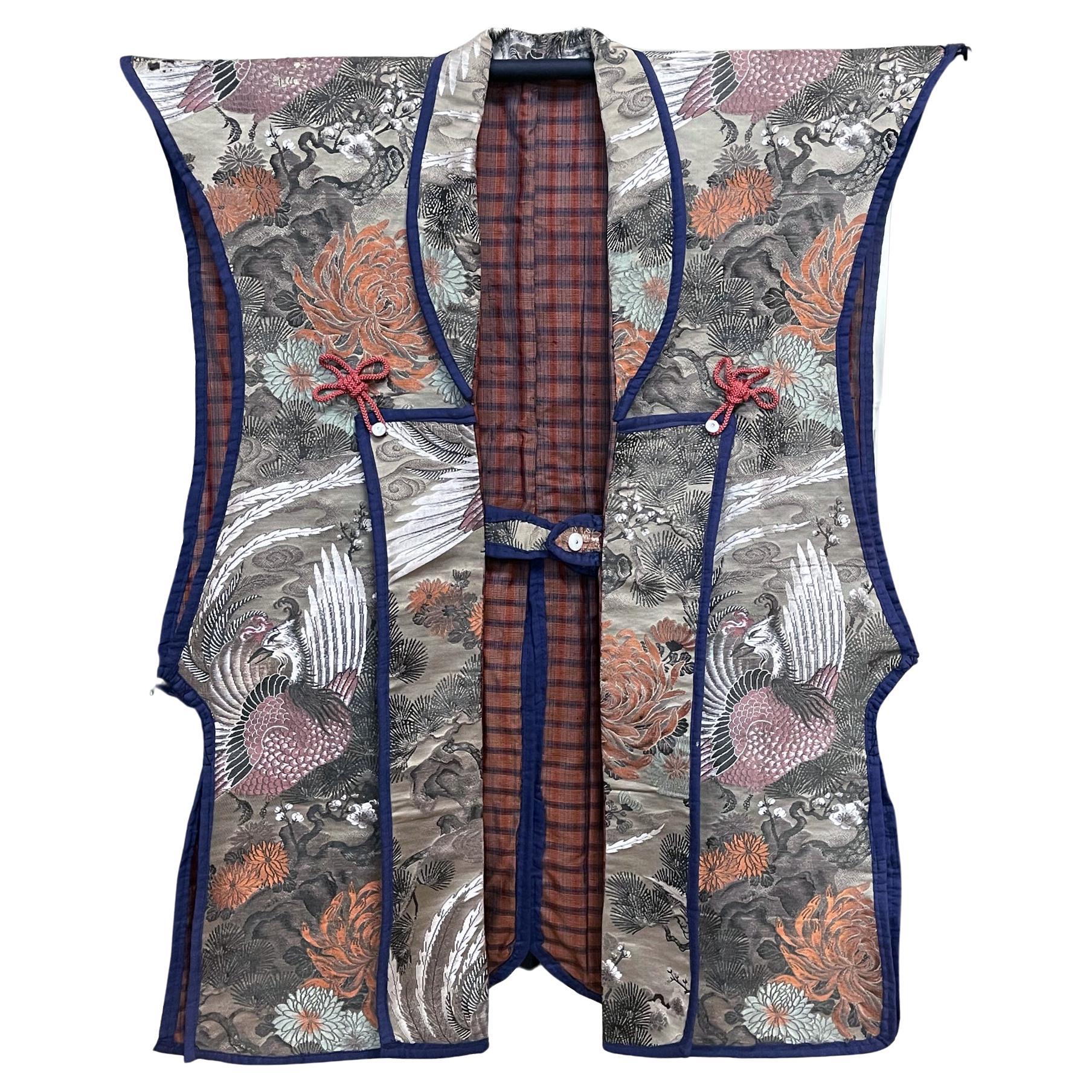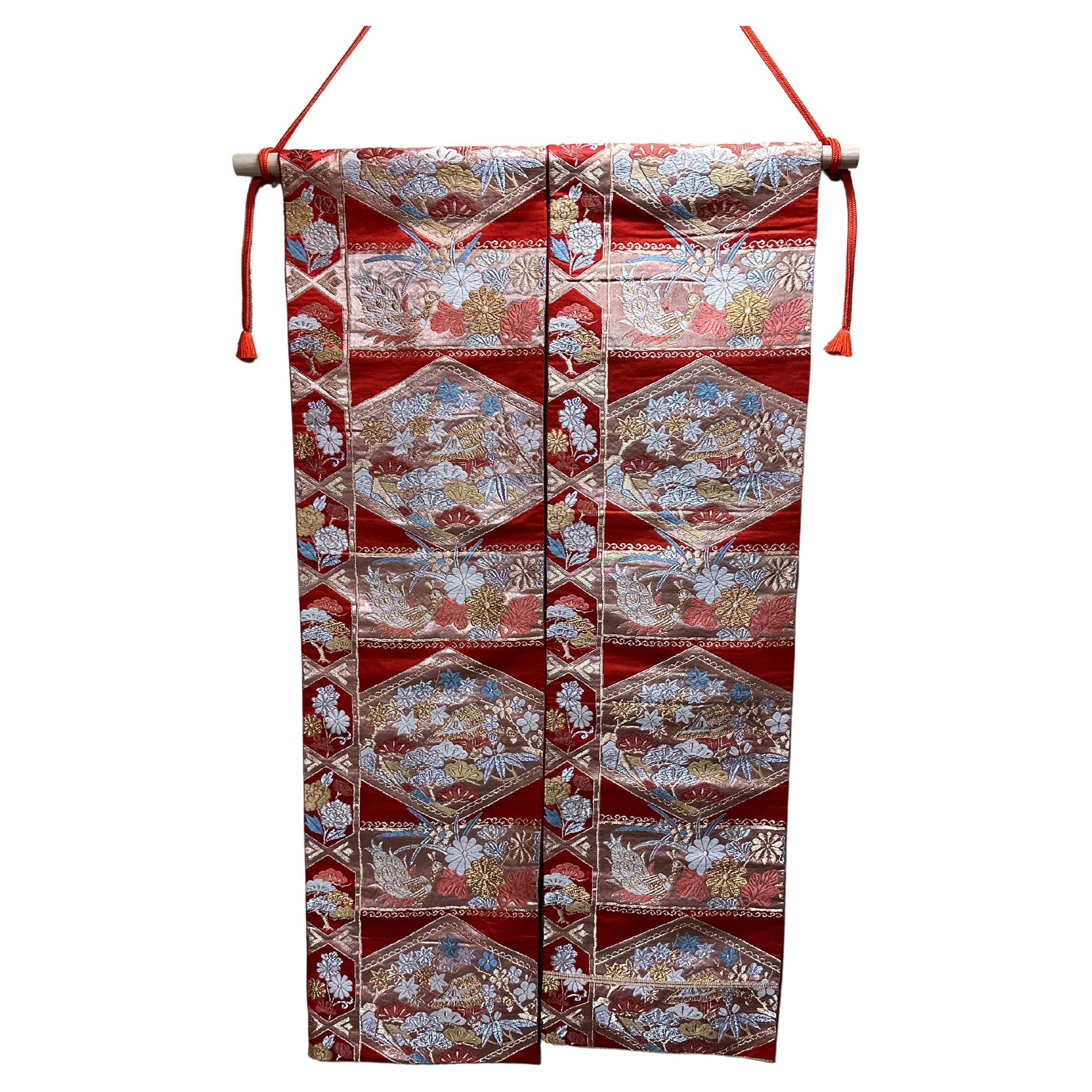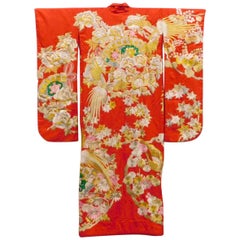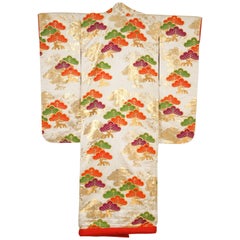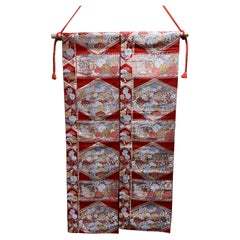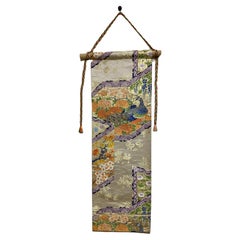
Beautiful Vintage Japanese Ceremonial Kimono Uchikake
View Similar Items
Want more images or videos?
Request additional images or videos from the seller
1 of 12
Beautiful Vintage Japanese Ceremonial Kimono Uchikake
About the Item
- Dimensions:Height: 76 in (193.04 cm)Width: 52 in (132.08 cm)Depth: 2 in (5.08 cm)
- Style:Japonisme (Of the Period)
- Materials and Techniques:
- Place of Origin:
- Period:
- Date of Manufacture:1930s-1940s
- Condition:Wear consistent with age and use. Strips of the red silk interior lining around the neck and along the bottom hem were replaced. Not noticeable.
- Seller Location:Atlanta, GA
- Reference Number:1stDibs: LU945012523261
About the Seller
5.0
Platinum Seller
These expertly vetted sellers are 1stDibs' most experienced sellers and are rated highest by our customers.
Established in 2006
1stDibs seller since 2010
478 sales on 1stDibs
More From This SellerView All
- Exceptional Embroidered Vintage Japanese Ceremonial KimonoLocated in Atlanta, GAA visually striking vintage Uchikake Wedding Kimono/Robe for ceremonial occasion, circa 1930s-1950s in the Oriental Art Deco style. The bridal garment...Category
20th Century Japanese Japonisme Textiles
MaterialsCotton, Silk
- Exceptional Embroidered Japanese Ceremonial KimonoLocated in Atlanta, GAA visually striking antique Uchikake Wedding Kimono/Robe for ceremonial occasion, circa end of Meiji to Taisho period 1910s-1930s. This bridal outer garment is of a bright red color ...Category
20th Century Japanese Japonisme Textiles
MaterialsBrocade, Silk
- Vintage Japanese Formal Black Silk KimonoLocated in Atlanta, GAA vintage Japanese silk Kuro Tomesode Kimono, circa 1960s-1980s. Kuro Tomesode is a dress for married woman for the most formal occasions, equivalent of the evening gowns in the west...Category
Mid-20th Century Japanese Japonisme Textiles
MaterialsSilk
- Vintage Japanese Silk Meisen Kimono with Geometrical DesignLocated in Atlanta, GAA vintage Japanese formal silk Kimono in an "ink green" color with striking geometrical design. The garment is hand-stitched Meisen kimono from a crepe l...Category
Mid-20th Century Japanese Japonisme Textiles
MaterialsSilk
- Vintage Japanese Gauze Kimono with Embroidery Modern DesignLocated in Atlanta, GAA Japanese formal Kimono made with a very fine black linen gauze augmented with applied modern circle pattern. The garment was hand-stitched and dated to circa 1930-50s. The black ga...Category
Mid-20th Century Japanese Japonisme Textiles
MaterialsSilk, Linen
- Beautiful Art Deco Style Japanese Ceremonial KimonoLocated in Atlanta, GAA truly beautiful Japanese ceremonial kimono, circa 1930-60s in an oriental Art Deco style. White silk textured background with elaborate and intricate embroidery in colors, silver a...Category
20th Century Japanese Japonisme Decorative Art
MaterialsTextile
$1,800 Sale Price30% Off
You May Also Like
- Vintage Kimono Silk Brocade Japanese Ceremonial 1970Located in North Hollywood, CAA vintage Mid-Century ivory color silk brocade collectable Japanese ceremonial kimono. One of a kind. Fabulous museum quality ceremonial kimono in pure silk with intricate detailed h...Category
20th Century Japanese Japonisme Textiles
MaterialsSilk
- Japanese Kimono Art / Tapestry, LongevityLocated in Shibuya City, TokyoThis orange silk-based obi is decorated with a tortoiseshell l pattern. The tortoiseshell pattern was handed down from China during the Asuka period in Japan. During the Heian period , only aristocrats were allowed to use the pattern, and the general public could not even see it. Therefore, the tortoiseshell pattern is known as a sacred and prestigious pattern. The tortoiseshell pattern is a regular hexagonal pattern, derived from the shell of a turtle. The regular hexagon is said to be the most stable shape in nature, which means ""sturdy and strong. Today, it is also said to be a pattern that brings good luck in money. The tortoiseshell pattern is decorated with pine trees, bamboo, plum blossoms, and flowers of the four seasons such as chrysanthemums, daffodils, autumn leaves, and peonies. In Japan, the pine, bamboo, and plum trees have been a traditional Japanese good-luck charm since around the Edo period Pine trees are as long as 200 to 400 years old, and some are thousands of years old. Pine trees grow in harsh environments where other trees cannot thrive, and they are considered a symbol of vitality and longevity because of their year-round blue foliage. Bamboo is a symbol of prosperity of offspring because it grows straight and straight with new shoots. Because of its nutritional value, the plum tree played the role of a medicine against illness in ancient Japan. When a Japanese emperor fell ill, he ate...Category
21st Century and Contemporary Japanese Tapestries
MaterialsSilk, Thread
$702 Sale Price55% Off - Japanese Kimono Art / Kimono Tapestry, the King of PeacocksLocated in Shibuya City, TokyoThis Japanese kimono tapestry is the only one of its kind in the world. It has been carefully and meticulously embroidered by Japanese craftsmen. We are proud to present this Kimono tapestry, embroidered with peacocks and flowers of the four seasons on a silk fabric based on the traditional color called “Kinari.” The peacock symbolizes “compassion,” “fertility” and “good health.” Because its life force is so strong that it eats poisonous snakes and insects, the peacock is believed to ward off evil spirits and prevent against “misfortune” and “suffering.” Japan is famous for its drastically different seasons. As the colorful flowers bloom, we can sense that the seasons are changing. Each of the flowers on this piece are carefully chosen. Plum blossoms, wisteria, and cherry blossoms in the spring; iris and hollyhock blossoms in the summer; chrysanthemum blossoms and grapes in autumn; and peony blossoms in the winter. This is a wonderful Japanese tapestry...Category
21st Century and Contemporary Japanese Tapestries
MaterialsSilk
$690 Sale Price25% Off - "Seasonal Blessings" by Kimono-Couture, Japanese Art / Kimono TapestryLocated in Shibuya City, TokyoKimono Tapestry "Seasonal Blessings" by Kimono-Couture ・Japanese Kimono Tapestry ・Textile Art ・Japanese Hanging Scroll 【Description of Kimono Art b...Category
21st Century and Contemporary Japanese Tapestries
MaterialsFabric, Yarn, Thread, Silk, Tapestry, Textile
- Japanese Kimono Art / Kimono Tapestry, The Queen of PeacocksLocated in Shibuya City, TokyoKimono Tapestry by Kimono-Couture Prepare to be enthralled by our exquisite kimono tapestry, meticulously crafted from a traditional kimono obi by skilled Japanese artisans. This one-of-a-kind tapestry embodies the essence of timeless artistry. The foundation of this kimono obi is crafted from silk, embellished with delicate strokes of gold leaf, creating a mesmerizing backdrop for the arabesque pattern. The arabesque, inspired by the ivy's vigorous growth in all directions, symbolizes vitality. In the Edo period (1600-1868), it was revered as a representation of longevity and prosperity, adding a touch of auspiciousness to this magnificent tapestry. Adorning the obi is an enchanting embroidered peacock, celebrated for its resplendent feathers. The peacock embodies qualities such as compassion, fertility, and good health. Its indomitable life force, evident in its ability to consume poisonous snakes and insects, grants it the power to ward off evil spirits and protect against misfortune and suffering. Surrounding the peacock, a tapestry of flowers...Category
21st Century and Contemporary Japanese Tapestries
MaterialsGold Leaf
$584 Sale Price27% Off - Late Meiji Period Sleeping Kimono / Yogi, JapanLocated in Point Richmond, CALate Meiji Period sleeping Kimono / Yogi, Japan Yogi are a type of oversized sleeping kimono traditionally used in Japan. This kimono would have b...Category
Early 20th Century Japanese Tribal Textiles
MaterialsCotton
Recently Viewed
View AllMore Ways To Browse
Wedding Kimono
Japanese Wedding Kimono
Vintage Wedding Kimono
Vintage Japanese Wedding Kimono
Deco Kimono
Art Deco Kimono
Oriental Embroidery
Japanese Uchikake
Vintage Cotton Kimono
Vintage Uchikake
Ceremonial Kimono
Japanese Ceremonial Kimono
Silk Embroidery Oriental
1930s Silk Kimono
Vintage Japanese Ceremonial Kimono
Silk Japanese Ceremonial Kimono
Kimono Ceremonial Vintage Silk
Gold Flying Cranes
